
Horsepower (hp) is a unit of measurement of power, or the rate at which work is done, usually in reference to the output of engines or motors. There are many different standards and types of horsepower. Two common definitions used today are the imperial horsepower, which is about 745.7 watts, and the metric horsepower, which is approximately 735.5 watts.
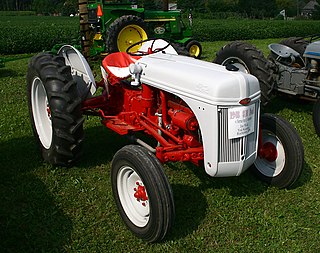
A tractor is an engineering vehicle specifically designed to deliver a high tractive effort at slow speeds, for the purposes of hauling a trailer or machinery such as that used in agriculture, mining or construction. Most commonly, the term is used to describe a farm vehicle that provides the power and traction to mechanize agricultural tasks, especially tillage, and now many more. Agricultural implements may be towed behind or mounted on the tractor, and the tractor may also provide a source of power if the implement is mechanised.

A traction engine is a steam-powered tractor used to move heavy loads on roads, plough ground or to provide power at a chosen location. The name derives from the Latin tractus, meaning 'drawn', since the prime function of any traction engine is to draw a load behind it. They are sometimes called road locomotives to distinguish them from railway locomotives – that is, steam engines that run on rails.

A steamroller is a form of road roller – a type of heavy construction machinery used for leveling surfaces, such as roads or airfields – that is powered by a steam engine. The leveling/flattening action is achieved through a combination of the size and weight of the vehicle and the rolls: the smooth wheels and the large cylinder or drum fitted in place of treaded road wheels.

A steam tractor is a tractor powered by a steam engine which is used for pulling.

The Case Corporation was a manufacturer of agricultural machinery and construction equipment. Founded, in 1842, by Jerome Increase Case as the J. I. Case Threshing Machine Company, it operated under that name for most of a century. For another 66 years it was the J. I. Case Company, and was often called simply Case. In the late 19th century, Case was one of America's largest builders of steam engines, producing self-propelled portable engines, traction engines and steam tractors. It was a major producer of threshing machines and other harvesting equipment. The company also produced various machinery for the U.S. military. In the 20th century, Case was among the ten largest builders of farm tractors for many years. In the 1950s its construction equipment line became its primary focus, with agricultural business second.

The Advance-Rumely Company of La Porte, Indiana was an American pioneering producer of many types of agricultural machinery, most notably threshing machines and large tractors. Started in 1853 manufacturing threshers and later moved on to steam engines. Allis-Chalmers Manufacturing Co. purchased Advance-Rumley in 1931. The company's main works would become what was later known as the "La Porte plant".
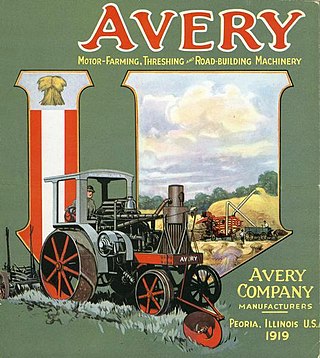
The Avery Company, founded by Robert Hanneman Avery, was an American farm tractor manufacturer famed for its undermounted engine which resembled a railroad engine more than a conventional farm steam engine. Avery founded the farm implement business after the Civil War. His company built a large line of products, including steam engines, beginning in 1891. The company started with a return flue design and later adapted the undermount style, including a bulldog design on the smokebox door. Their design was well received by farmers in central Illinois. They expanded their market nationwide and overseas until the 1920s, when they failed to innovate and the company faltered. They manufactured trucks for a period of time, and then automobiles. until they finally succumbed to an agricultural crisis and the Depression.

The Antique Gas & Steam Engine Museum (AGSEM) is a living history museum founded in 1969. It is located on 55 acres (220,000 m2) of county-owned land at 2040 N Santa Fe Ave. on the outskirts of Vista, California. The museum is a non-profit 501c(3) organization, run by several paid employees along with volunteer help.

Two-wheel tractor or walking tractor are generic terms understood in the US and in parts of Europe to represent a single-axle tractor, which is a tractor with one axle, self-powered and self-propelled, which can pull and power various farm implements such as a trailer, cultivator or harrow, a plough, or various seeders and harvesters. The operator usually walks behind it or rides the implement being towed. Similar terms are mistakenly applied to the household rotary tiller or power tiller; although these may be wheeled and/or self-propelled, they are not tailored for towing implements. A two-wheeled tractor specializes in pulling any of numerous types of implements, whereas rotary tillers specialize in soil tillage with their dedicated digging tools. This article concerns two-wheeled tractors as distinguished from such tillers.
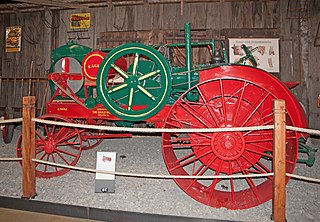
The Eagle Manufacturing Company of Appleton, Wisconsin, United States, first entered the farm equipment market in 1906 with a 32-horsepower (24 kW) tractor. In 1899 the company was located at 671 Superior St in Appleton Wisconsin. In 1904 it built a production facility designed by architect Wallace W. De Long. It returned to the marketplace several years later, in 1929 offering a 20-35 Model E. Based on a two-cylinder traction engine design, the engine measured 8.00x9.00 inches in bore and stroke. A truly massive affair, it was rated at 20 drawbar horsepower and 35 belt-pulley horsepower. Eagle also built its Model H alongside the Model E from 1926 to 1930. With an identical 8.00-inch (203 mm) bore to the Model E, but a 1.00-inch (25 mm) longer stroke at 10.00 inches, the Model H created a brawny 40 horsepower (30 kW) at the drawbar. Eagle was one of the first tractor manufacturers to use a 6-cylinder engine. It switched from 2 cylinders to 6 cylinders in 1930. Eagle built tractors from 1906, but halted production during World War II never to start its assembly lines again.
Cockshutt was a large agricultural machinery manufacturer, known as Cockshutt Farm Equipment Limited (1957–1962), based in Brantford, Ontario, Canada.

The Oliver Farm Equipment Company was an American farm equipment manufacturer from the 20th century. It was formed as a result of a 1929 merger of four companies: the American Seeding Machine Company of Richmond, Indiana; Oliver Chilled Plow Works of South Bend, Indiana; Hart-Parr Tractor Company of Charles City, Iowa; and Nichols and Shepard Company of Battle Creek, Michigan.
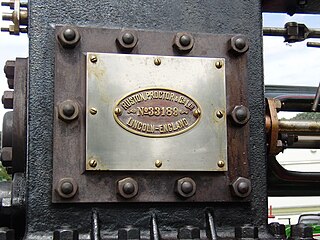
Ruston, Proctor and Company was established in Lincoln, England in 1857, and were manufacturers of steam tractors and engines. They later became Rustons and then Ruston & Hornsby.
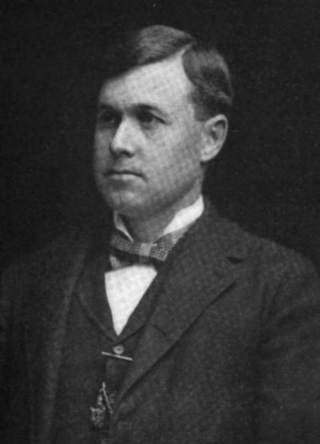
Milton Othello Reeves was an early pioneer of the American automobile industry. He held more than 100 patents.
The National Threshers Association (NTA) is a non-profit group of enthusiasts who are interested in steam-powered traction engines - also known as "steam tractors", "steam traction engines" or simply "steam engines" - as well as related equipment. The group's premier event is its annual reunion/show, which features live exhibits of antique steam engines and gas-powered machinery from throughout the United States and Canada. Dating back to 1944, the annual show is recognized as the oldest event of its type in the United States.

Geiser Manufacturing Company was an early manufacturing company in Waynesboro, Pennsylvania. Geiser Manufacturing was incorporated in 1869 by Peter and Daniel Geiser. The company built grain separators, threshers, plows, and steam traction engines. The company's brand name was Peerless. The main building was 334 ft long and 3 stories in height, and had a 34 ft cupola. In January 1891 its total monthly payroll amounted to over 10,000 US dollars and employed 162 people.

The Allis-Chalmers Model 6-12 was a farm tractor produced by Allis-Chalmers between 1918 and 1923. Like many other tractors of the era, its model name came from its horsepower ratings, with 6-12 meaning 6 hp at the drawbar and 12 hp at the belt pulley.

Russell & Company of Massillon, Ohio, are best known for manufacturing farm and railroad machinery in the late 19th and early 20th centuries. They built 18,000 steam tractors and stationary engines and 22,000 threshing machines.




















